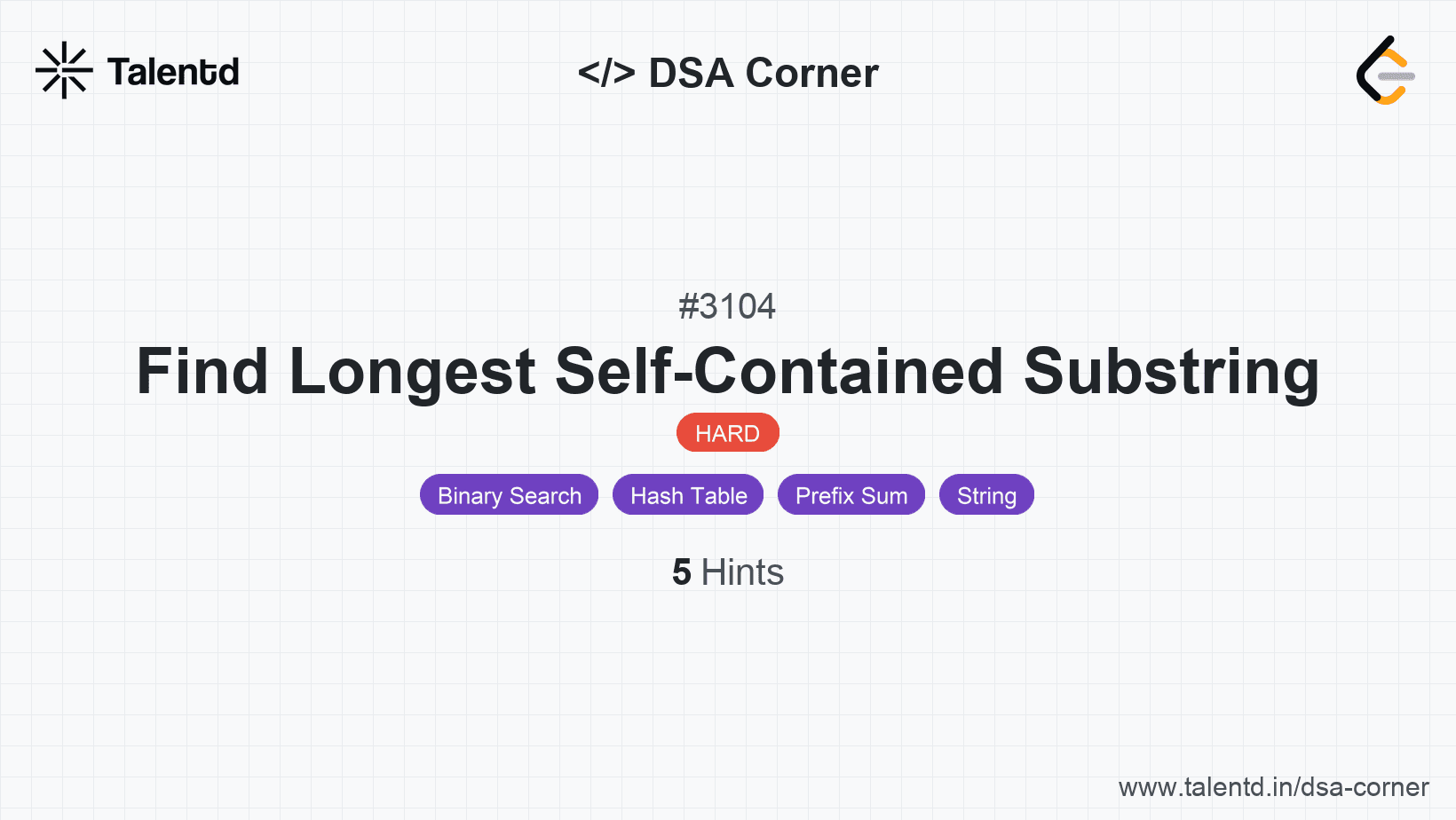
Sponsored
Sponsored
Use these hints if you're stuck. Try solving on your own first.
Fix the start index of the substring.
For some fixed index <code>start</code>, let's try to find some index <code>end</code> such that this substring satisfies the property and also <code>end</code> is as maximum as possible.
Write some recursive function <code>shrink(start, end)</code> that gives a substring. If the substring is valid, then return <code>end</code>. Otherwise, it reduces <<code>end</code> to reach some valid <code>end</code>.
For some <code>shrink(start, end)</code>, if the substring is not valid, it means there is some character that is both inside and outside of the substring. Now try to reduce <code>end</code> such that it does not contain that character anymore.
If you implement the <code>shrink(start, end)</code> function optimally, you'll achieve <code>O(n * 26 * 26)</code> by using partial sum.